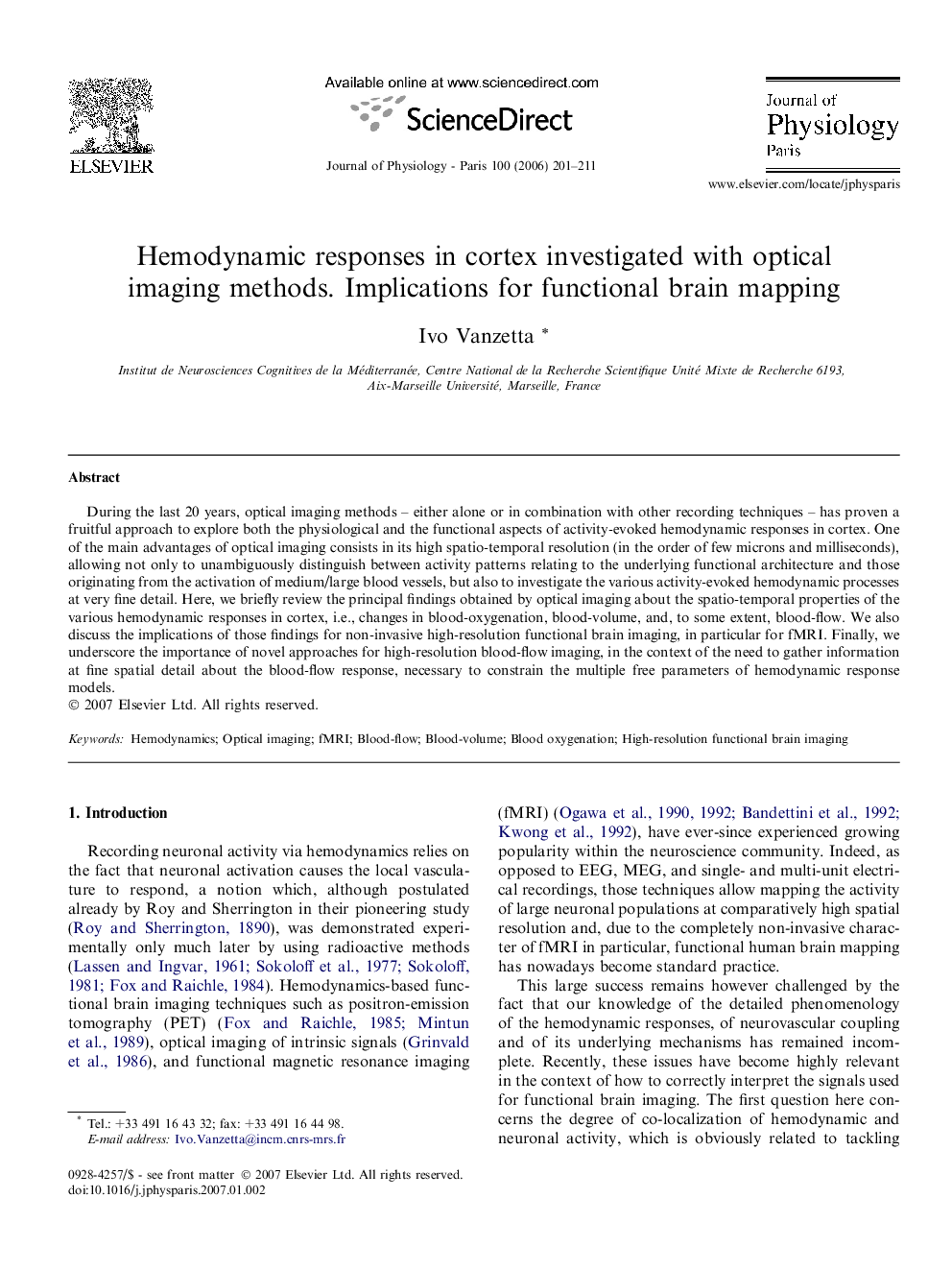| Article ID | Journal | Published Year | Pages | File Type |
|---|---|---|---|---|
| 2842463 | Journal of Physiology-Paris | 2006 | 11 Pages |
During the last 20 years, optical imaging methods – either alone or in combination with other recording techniques – has proven a fruitful approach to explore both the physiological and the functional aspects of activity-evoked hemodynamic responses in cortex. One of the main advantages of optical imaging consists in its high spatio-temporal resolution (in the order of few microns and milliseconds), allowing not only to unambiguously distinguish between activity patterns relating to the underlying functional architecture and those originating from the activation of medium/large blood vessels, but also to investigate the various activity-evoked hemodynamic processes at very fine detail. Here, we briefly review the principal findings obtained by optical imaging about the spatio-temporal properties of the various hemodynamic responses in cortex, i.e., changes in blood-oxygenation, blood-volume, and, to some extent, blood-flow. We also discuss the implications of those findings for non-invasive high-resolution functional brain imaging, in particular for fMRI. Finally, we underscore the importance of novel approaches for high-resolution blood-flow imaging, in the context of the need to gather information at fine spatial detail about the blood-flow response, necessary to constrain the multiple free parameters of hemodynamic response models.
